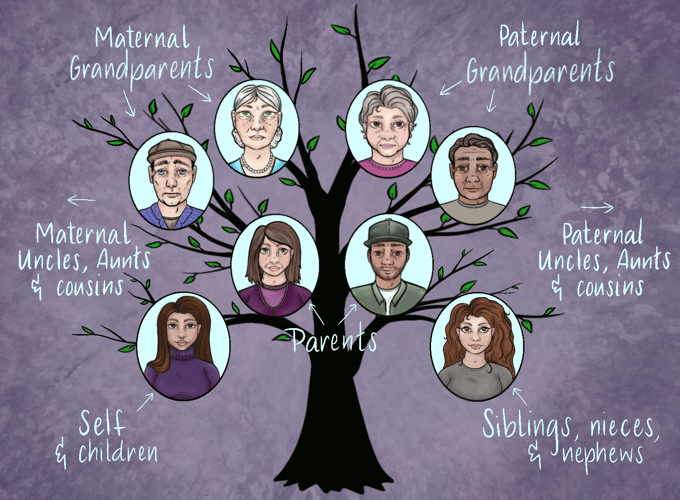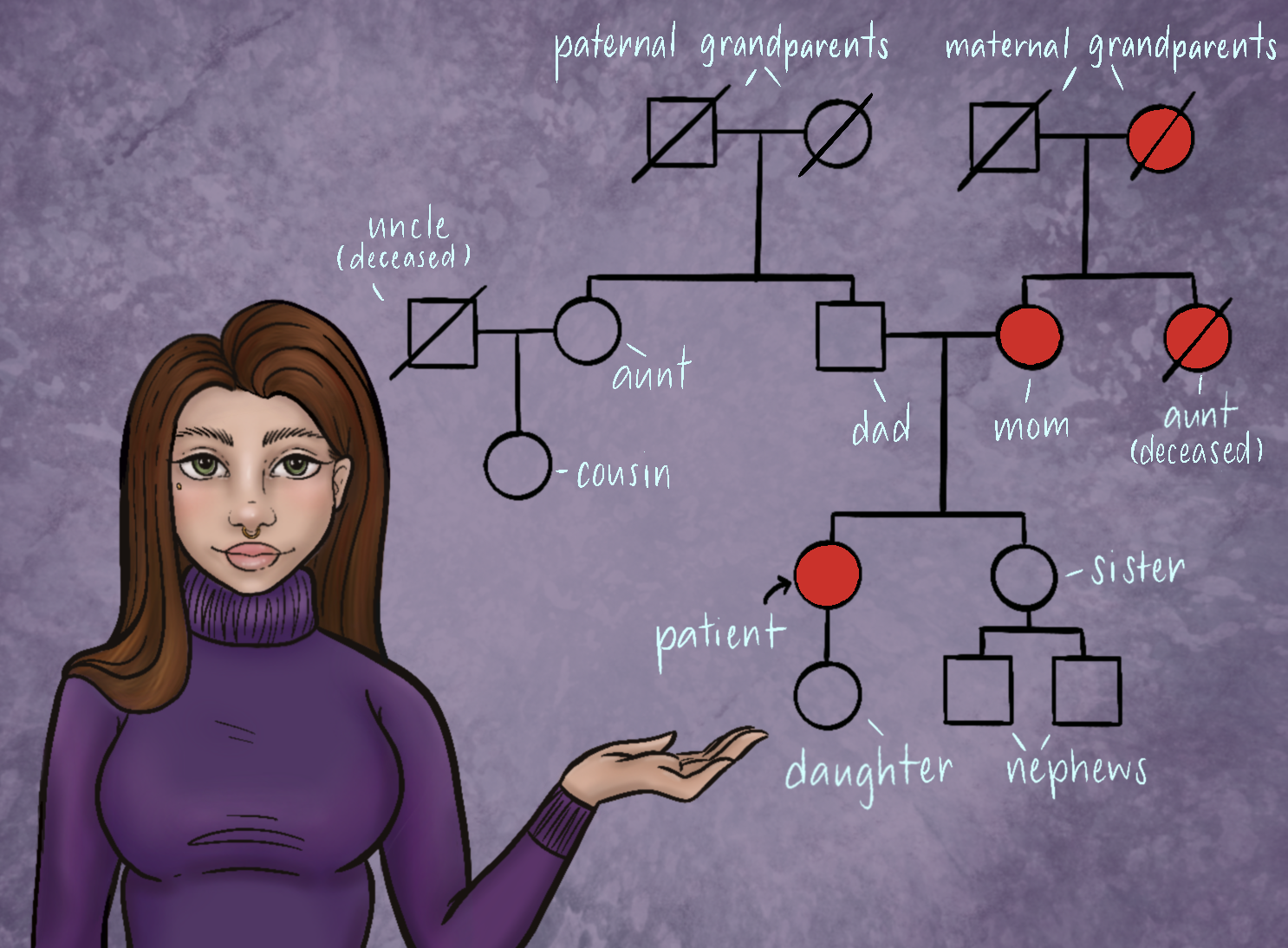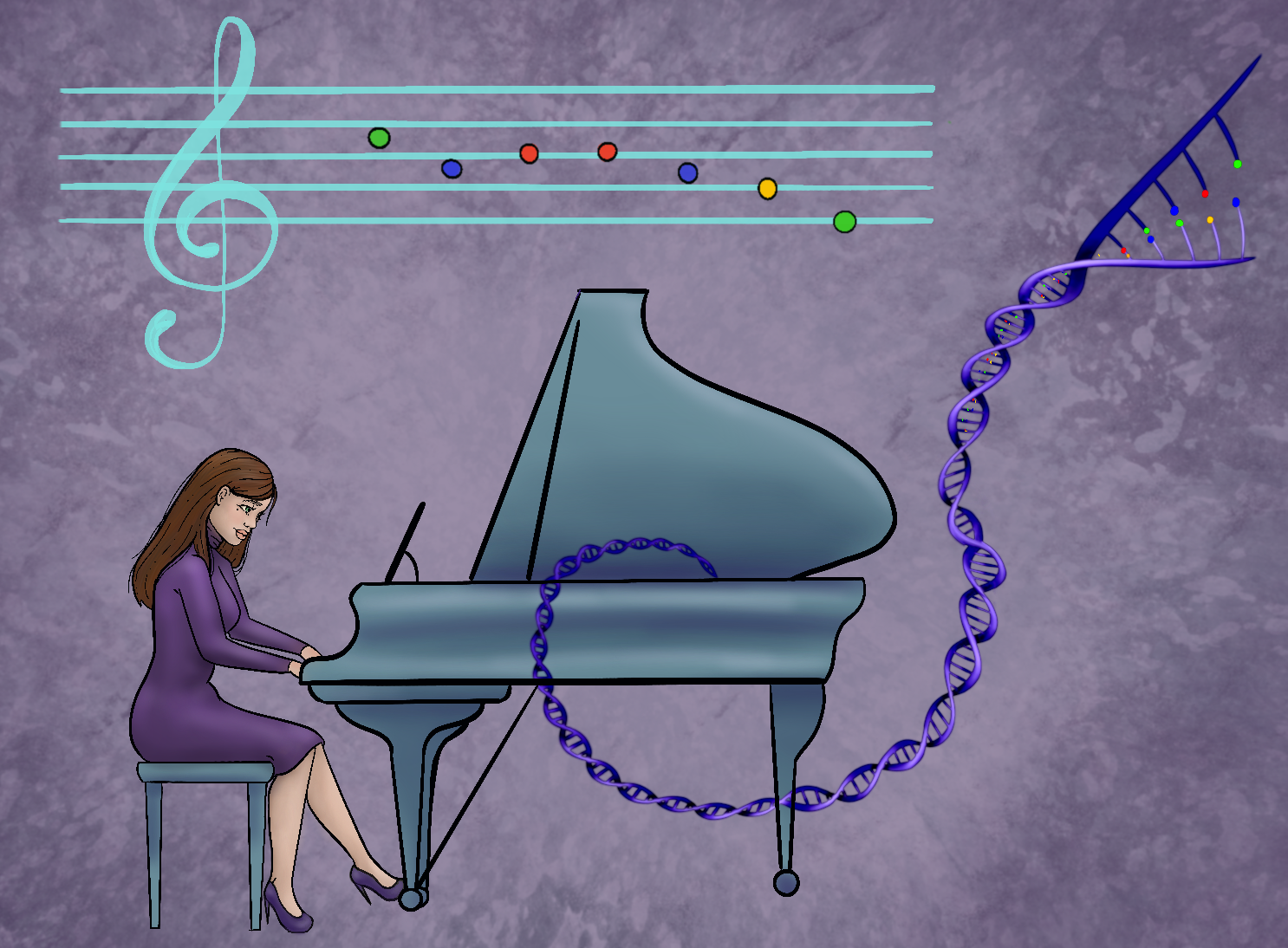Series Overview: Hi, my name is Shari and like the majority of our readers I don’t have a degree in science. What I do have is almost a decade of experience working closely with Genetic Counselors, and a passion for sharing genomic information in an approachable and easy to understand way. This passion was developed early in my career, fueled by my quickly building frustration about the over-complicated resources I found during initial attempts at self-guided learning. Genomics 101 is a blog series by GenomicMD that aims to be a solution to that frustration for others. By breaking down the complex language surrounding this field, we hope to empower people (like you!) to be more informed about how genomics can affect their healthcare journey.
Welcome back to Genomics 101, the blog series that seeks to help our readers learn about genomics in an approachable way, without all the over-complicated lingo. Our last post was a “part 1” on heredity that focused on the most commonly used genomics terms associated with inheritance. Today we are here with “heredity, part 2,” where we will dive further into the concepts of ancestry and family history, why you and your family display different traits despite being closely related, and why it’s so important to understand all of this stuff when discussing genetic risk. Let’s get started!
When we think of heredity, it often conjures up images of our personal family line - our parents, grandparents, and so on. However, as we discussed in our last post, heredity is a little more complicated than that. Before we get into the details, let’s review a bit. We know that heredity is the transfer of specific genetic characteristics, or traits, from parent to offspring. We also know that it plays a crucial role in human development, as the genes that are passed down to us influence a great number of things such as our physical and behavioral characteristics as well as our risk of developing certain diseases. These inherited traits and details about our environment and lifestyle all factor into a person’s phenotype. Now that we’ve reviewed that information, let’s explore deeper into the varying layers of heredity and how they influence us.
We will begin our discussion with something many people will recognize - a family tree. Family trees are non-medical diagrams used to show how the relationships between people in a family “branch out” by comparing them to a tree. Usually, these diagrams will start with ourselves and then the closest familial relations we have at the base - our parents, grandparents, siblings, and other first-degree relatives. First-degree relatives are usually the closest links within our family tree and often one of the biggest clues about a person’s genetic inheritance, as they typically share much of the same DNA. From these ‘main branches,’ the family tree will spread out to more distant relatives, like cousins, great uncles and aunts, great grandparents, etc.

In genetics, healthcare providers use a very similar tool to a family tree, called a pedigree, in a very similar way. Pedigrees are essentially a more “scientific” version of a family tree, and are used to map out an individual’s family medical history - or the documented information about illnesses and medical conditions within a family across several generations. Pedigrees can be used as a visual guide to trace these medical histories and help assess a specific person in a given family’s risk of developing a certain disease or condition. Even within the same family, every individual’s pedigree will be different. This is because factors such as personal and family health history, environment, race, ethnicity, and ancestry all play a big role in the way the people in a family line develop over time.

It’s important to understand that though the terms “race,” and “ethnicity,” are often used interchangeably in social contexts, they actually mean different things. “Ethnicity” is a term that refers to the social and cultural qualities that place a person within a community that shares a common background. Individuals of the same ethnicity may share, for example: history, language, customs, religion, etc. Alternatively, the term “race” refers more to the physical traits (or phenotypes) that place a person within a group of people with similar features, such as skin color or eye shape. Though both of these terms are generally used more socially than medically, certain patterns of genetic variation are often shared among people of particular racial and ethnic backgrounds due to the similarity of their genetic code. The more closely related two individuals, families, or populations are, the more patterns of variation they tend to share. This is why we sometimes notice that certain diseases/conditions occur more commonly in certain groups of people - like how sickle cell anemia usually affects people with African ancestry or how some types of cancer can ‘run in families.’ All of this goes to say that there are many factors that influence not only our genetic background, but also how we think of the entire IDEA of heredity overall.
So, how do these terms factor into the idea of “ancestry,” and why does all of this matter? Remember how we defined heredity as the transfer of traits above? (Of course you do!) Well, when discussing heredity there are two main ways to think about ancestry. Most people will be familiar with genealogical ancestry, which reflects that image of a family line we talked about earlier. We can visualize this as a path through time where you are tracing back and listing all of your individual relatives like your parents, grandparents, and their parents before them. Genetic ancestry, on the other hand, is a bit more specific than just a straight line of WHO we came from. This type of ancestry looks more closely at the individual paths the material in your genes may have taken on the journey through your genealogical ancestry in order to create the unique phenotype that makes you who you are.

This process is sometimes called genetic recombination, which as you may have guessed from the name, refers to the rearranging of DNA sequences through the breaking and recombining of chromosomes and their segments. Genetic recombination provides many benefits, such as: increasing genetic diversity (by allowing for new combinations of alleles) or restricting the effects of certain (sometimes harmful) genetic variants to a specific area rather than the entire gene. Genetic recombination might be why people say that you “have your mother’s eyes” or “your father’s nose,” or even why you may look completely different than your siblings but exactly like some distant relative you’ve never even met (a true story for me and I’m sure many others). To put it another way, genetic recombination makes it so that 2 people who are closely related within the same family can inherit almost completely different traits, or more distantly related family members can sometimes end up with very similar ones.
Since can’t make it through a whole blog post without an analogy let's wrap this up by comparing genetic recombination to playing a piano - only instead of each key representing a specific note, they represent one of the four chemical bases that make up a DNA strand (Adenine, Guanine, Cytosine, and Thymine - check out the first chapter of Genomics101 for a refresher course on the basics of DNA!) On this genetic piano, we can play our chemical keys in the same order over and over in the same combinations, or we can play different melodies if we choose. This is the same thing that happens with genetic recombination: by rearranging the order of genetic material through the exchanging of bases and their pairs, we create different offspring with different traits in every new generation. The ‘melody’ within families can often 'keep tempo’ across generations, but there is always the possibility of a key change, swapped note, or subtle nuance in timing. These small changes can alter the style of a musical piece, just like genetic recombination can add to the diversity in both our families and our world--helping to create balance and harmony with every new generation.

As you can see, heredity is a very broad subject that plays a crucial role in our understanding of genetics and how our genes affect us personally. However, with a little bit of effort and curiosity we can gain a better understanding of our DNA and how it influences our physical and behavioral traits, as well as our susceptibility to certain diseases. By investigating our family tree and exploring our genealogical and genetic ancestry we can gain a better understanding of our unique genetic makeup and what makes us who we are. We hope that this two-part series on heredity has helped demystify some of the complexity surrounding genomics and made it more approachable for our readers. Thank you for joining us on this journey through the fascinating world of genomics, hope to see you in the next blog!
Blog Glossary:
Ethnicity - a term referring to the social and cultural qualities that place a person within a community that shares a common background. Individuals of the same ethnicity may share, for example: history, language, religion, culture, etc.
Race - a term referring to the physical traits (or phenotypes) that place a person within a group with similar features, such as skin color and eye shape.
Ancestry - a term referring to the people whom you are descended from. Just as you receive half of your DNA from each of your parents, they also receive half of their DNA from each of their parents and so on. The term ‘ancestry’ simply refers to this line of inheritance.
Genetic Ancestry - Genetic ancestry refers to the specific path an individual’s genes have taken down a family line in order to create the unique genetic traits within their phenotype.
Genealogic ancestry - Genealogic ancestry refers to a direct line of desdance, or actual people, from which an individual comes from.
Genetic Recombination - refers to the rearranging of DNA sequences through the breaking and rejoining of chromosomes in order to produce new combinations of alleles.
Family Tree - a non-medical diagram used to show the relationships between people in a family.
Pedigree - a chart or diagram showing the connection between family members across several generations, which usually indicates which individuals have certain genetic traits and/or disease. A “medical” version of a family tree.
Family Medical History - a record of the medical history and relationships within a given family.
“First-Degree” Relative - family members that are related to each other directly with no other family members in between, and would be placed right next to each other on the family tree or pedigree. Ex: parents, children, and siblings